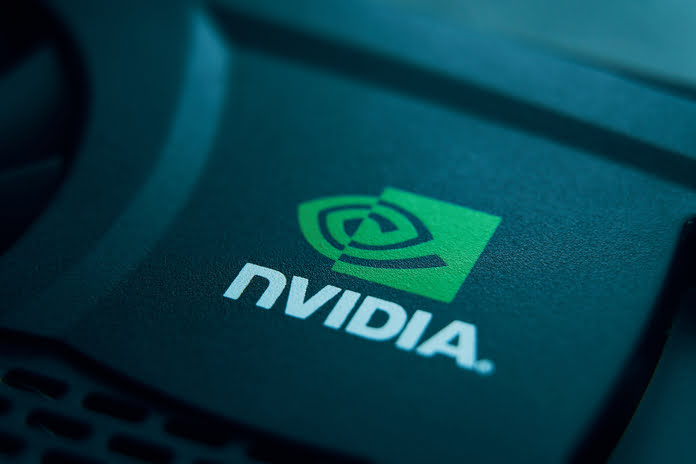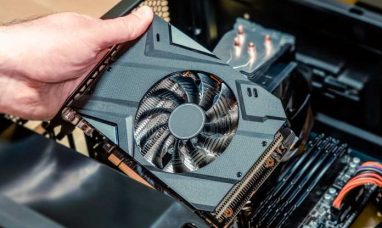Nvidia Corp. (NASDAQ:NVDA), already at the forefront of the technology industry’s AI computing race, has unveiled a remarkably robust quarterly revenue forecast, propelled by the soaring demand for its AI processors.
After Nvidia projected sales of approximately $16 billion for the three months ending in October, Nvidia stock experienced a surge of more than 8% during after-hours trading. This figure far surpassed analysts’ estimates of $12.5 billion, according to data compiled by Bloomberg. Nvidia’s performance in the previous quarter had also exceeded expectations, leading to an additional approval of $25 billion for stock buybacks.
This outlook underscores Nvidia’s pivotal role as the primary beneficiary of the AI computing boom. As the need for chatbots and similar tools continues to rise, data center operators are increasingly stocking up on Nvidia’s processors, renowned for their ability to handle the substantial workloads demanded by artificial intelligence. This trend has enabled Nvidia to swiftly recover from a broader chip industry slump and to achieve sales growth at its most rapid rate in years.
In a statement, Chief Executive Officer Jensen Huang remarked, “A new computing era has begun.” He noted that companies worldwide are transitioning from a general-purpose approach to one that can adeptly manage accelerated computing and generative AI, reminiscent of ChatGPT.
This post-market surge adds to the stock’s impressive over threefold increase this year. Prior to the release of Nvidia’s quarterly report, the shares had concluded at $471.16 in New York on the preceding Wednesday.
For the fiscal second quarter ending on July 30, the California-based company reported a doubling of revenue to $13.5 billion. The profit reached $2.70 per share, excluding specific items. This exceeded analysts’ forecasts of approximately $11 billion in sales and $2.07 in profit.
Following yet another exceptional quarter in May, Nvidia became the first semiconductor company to achieve a market valuation of $1 trillion. The company has solidified its position as the leading provider of infrastructure essential for supporting the growing implementation of AI systems. However, investors have been awaiting further proof that the second quarter marked the onset of a long-term expansion rather than a momentary spike. The results unveiled on Wednesday were even more bullish than anticipated.
Highlighting Nvidia’s extraordinary growth, the revenue target for this quarter is 28% higher than Wall Street projections, nearly reaching the company’s total annual sales in 2021.
Nvidia, co-founded in 1993 by still-standing CEO Huang, has adeptly transformed from a business focused on producing graphics chips for video games into a dominant force in the accelerator market—chips that facilitate the training of AI software through extensive data bombardment. Nvidia’s continuous introduction of increasingly powerful processors, accompanied by corresponding software, has left competitors trailing far behind. Notably, major customers such as Microsoft Corp. and Alphabet Inc.’s Google are eagerly acquiring as many chips as Nvidia can provide.
Similar to many of its counterparts, Nvidia doesn’t engage in its own chip production; instead, it relies on outsourced manufacturing provided by Taiwan Semiconductor Manufacturing Co. and Samsung Electronics Co. While this arrangement exempts Nvidia from the substantial costs and risks associated with manufacturing investments, it also limits its ability to swiftly adjust its supply.
While concerns had arisen about supply constraints impacting Nvidia’s sales in the current quarter, the company’s forecast indicated that operations are proceeding seamlessly.
The division within Nvidia that furnishes chips to data centers, previously a secondary operation, has evolved into its most lucrative sector. The unit achieved $10.3 billion in sales during the last quarter, surpassing the estimated $7.98 billion. Gaming revenue stood at $2.49 billion, outperforming the average analyst prediction of $2.38 billion. Automotive-related chips contributed $253 million.
AI has dominated discussions among tech investors this year, with every major company touting its capabilities in this domain. However, Nvidia is among the few reaping substantial profits from this trend, which has escalated since OpenAI’s ChatGPT made its public debut in November. This tool effectively showcased the remarkable potential of generative AI to a broader audience.
Nvidia Stock
Nvidia stock surge of over 200% this year has outpaced the gains of all other constituents in the closely monitored Philadelphia Stock Exchange Semiconductor Index.
Nvidia has also become a pivotal tech industry bellwether. The company’s projections offer insights into the strategies of some of the world’s most valuable enterprises, providing indications of their willingness to invest in computer system overhauls to accommodate AI.
Meanwhile, other chip manufacturers, including leading PC chipmakers Advanced Micro Devices Inc. and Intel Corp., are striving to catch up with Nvidia in the realm of AI processors. However, Nvidia has continued to enhance its products and release complementary software and services to maintain its competitive advantage.
Featured Image: Megapixl















